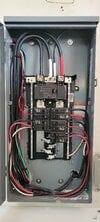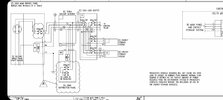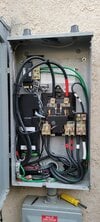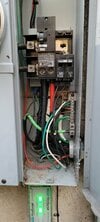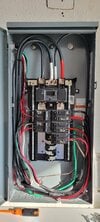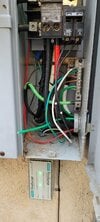Hey everyone, I had a guy install a 50 amp breaker for an induction stove and another one for a hot tub (the bottom breaker on the left and right sides). This is in my main backup panel which encompasses my whole house. So from this panel is the meter and a single 200 amp breaker and I believe that is where the ground is run.
I wanted to make sure it was wired correctly and now I'm having doubts. I see he wired the neutral and ground to the bus bar. Which seems like that's fine as long as it is the main panel but I don't think it should be here as none of the other breakers even have a neutral or ground here.
Could you help guide me if I need to make a change? If you need more pictures or info please let me know.
Thanks in advance!
I wanted to make sure it was wired correctly and now I'm having doubts. I see he wired the neutral and ground to the bus bar. Which seems like that's fine as long as it is the main panel but I don't think it should be here as none of the other breakers even have a neutral or ground here.
Could you help guide me if I need to make a change? If you need more pictures or info please let me know.
Thanks in advance!



